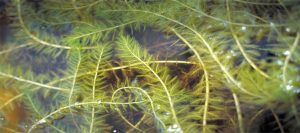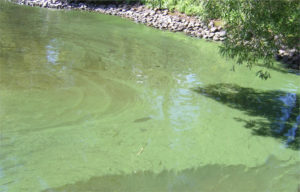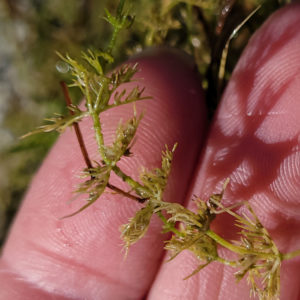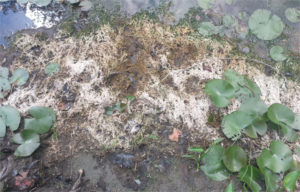Algae or Aquatic Plants : How to Tell Them Apart?
You’ve already read our article on aquatic plants, and the one about algae, but did you know that there are important differences between these two groups of photosynthetic organisms? And did you know that they differ greatly in how we approach their treatment? Find out here how to differentiate between them and how to control them efficiently.
Plants
Submerged aquatic plants are often mistaken for ‘algae’. But beware! An overabundance of aquatic plants cannot be managed in the same way as an overabundance of algae, so it is important to use a common vocabulary.


Plants can be identified by the presence of visible leaves and roots. They are usually anchored in the sediment, but there are exceptions. For example, duckweed is a plant that floats and has its roots in the water, like a duck. Water lilies have large rhizomes that serve as an energy reserve to get them through the winter.
To control the plants, simply cut them down, then install a benthic barrier over them for 4-6 weeks. This barrier will cut off the light and thus deprive the plant of its energy source, the sun. It is important to know that the algaecide is effective against algae but has no effect on a population of aquatic plants.
the algaecide is effective against algae but has no effect on a population of aquatic plants.
Algae
They are usually single-celled organisms, invisible to the naked eye, but can form colonies assembled in mats or clouds of considerable size. Green algae are the most common, and are responsible for the green color of pond water. The so-called ‘filamentous’ green algae grow from the bottom near the sediment, and when they accumulate enough gas (oxygen) by photosynthesis in their tissues, they rise to the surface, forming unsightly, green, slimy mats on ponds.
Two Pecular Algae
Two special cases are worth mentioning when talking about algae: cyanobacteria and multi-cellular algae.
Cyanobacteria
Cyanobacteria, also known as blue-green algae, are not technically algae, but rather very old bacteria (archaea). They perform photosynthesis, which is why they are often treated as algae. Read our article HERE for more information on cyanobacteria.
Chara sp. and Nitella sp.
Chara and Nitella are two genera of multi-celled macro-algae that resemble aquatic plants at first sight. Since the difference between Chara and Nitella is very subtle, they are generally both called ‘Chara’. They can often be removed manually from the pond with a fork or rake. They have no energy or water reserves and will die as soon as they dry out. They are often recognized by their skunk-like odor when a large handful is rubbed.

The Chara algae look very much like aquatic plants, but if you examine them more closely you will see that they have no leaves or roots, only large cells placed end to end.

Chara sp. whitens as it dries, due to the large amount of calcium salts it ingests into its cells.
To learn how to control the algae in your pond please read this article : Controlling algea in your pond
We hope this article has demystified the different organisms that can live in your water body. If you would like to know more about control solutions, contact us!
